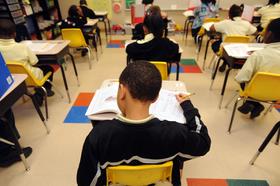For the 2025 school year, there are 2 public elementary schools in Boone/Winnebago ROE School District.
Overview
This School District
This State (IL)
# Schools
4 Schools
3,104 Schools
# Students
n/a
1,223,913 Students
# Teachers
21 Teachers
89,923 Teachers
Student-Teacher Ratio
n/a
n/a
District Rank
Math Test Scores (% Proficient)
(20-21)≤20%
28%
Reading/Language Arts Test Scores (% Proficient)
(20-21)≤20%
32%
Students by Ethnicity:
Diversity Score
-
0.71
% American Indian
n/a
1%
% Asian
n/a
6%
% Hispanic
n/a
27%
% Black
n/a
17%
% White
n/a
44%
% Hawaiian
n/a
n/a
% Two or more races
n/a
5%
District Revenue and Spending
Total Revenue
$2 MM
$41,381 MM
Spending
$1 MM
$39,976 MM
Revenue / Student (21-22)
$4,716
$19,707
Spending / Student (21-22)
$2,515
$19,097
Best Boone/Winnebago ROE School District Public Elementary Schools (2025)
School
(Math and Reading Proficiency)
(Math and Reading Proficiency)
Location
Quick Facts
Rank: #11.
Summit Academy Rssp
Alternative School
(Math: <50% | Reading: <50% )
Rank:
Rank:
10/
Top 10%10
1102 Evans Ave
Machesney Park, IL 61115
(779) 771-6392
Machesney Park, IL 61115
(779) 771-6392
Gr: 6-12
Rank: n/an/a
Summit Academy Taoep
Alternative School
1102 Evans Ave
Machesney Park, IL 61115
(815) 636-3060
Machesney Park, IL 61115
(815) 636-3060
Gr: 6-12
Recent Articles

Why Single-Sex Public Schools are Growing in Popularity
This article examines the growing trend of single-sex public schools in the United States. It explores the potential benefits, research findings, and controversies surrounding gender-specific education, as well as the factors driving its increasing popularity among parents and educators.

When Teachers Cheat: The Standardized Test Controversies
Teachers across the country are being accused of cheating on standardized tests, using erasers to conveniently change their students’ answers. However, are these teachers driven to cheat because the funding system is flawed?

When Field Trips Turn Deadly: Who is Responsible?
Recent deaths during field trips have parents and school officials questioning the safety of these excursions. Learn about these tragedies and what parameters should be in place to ensure a safe field trip.





